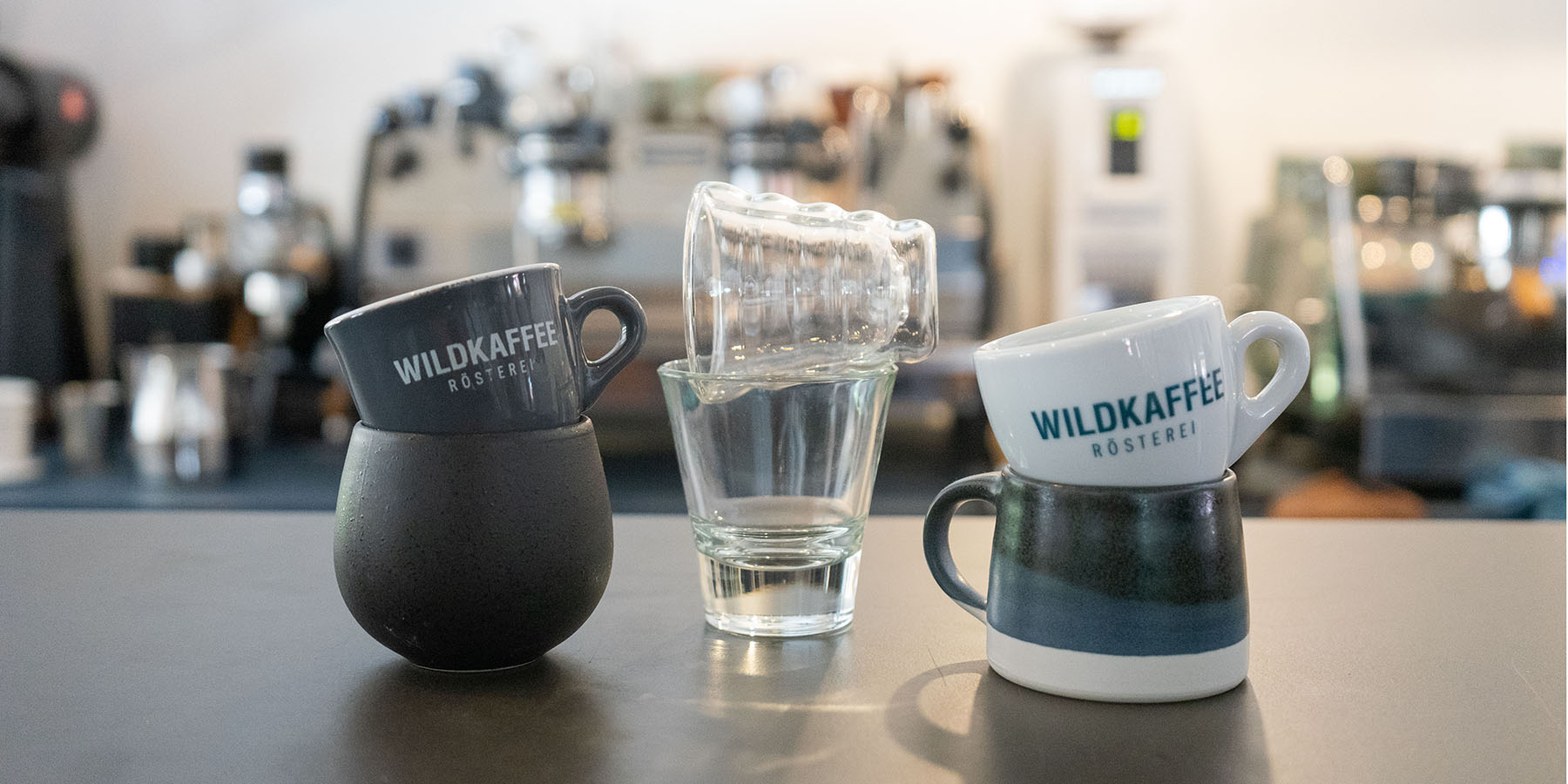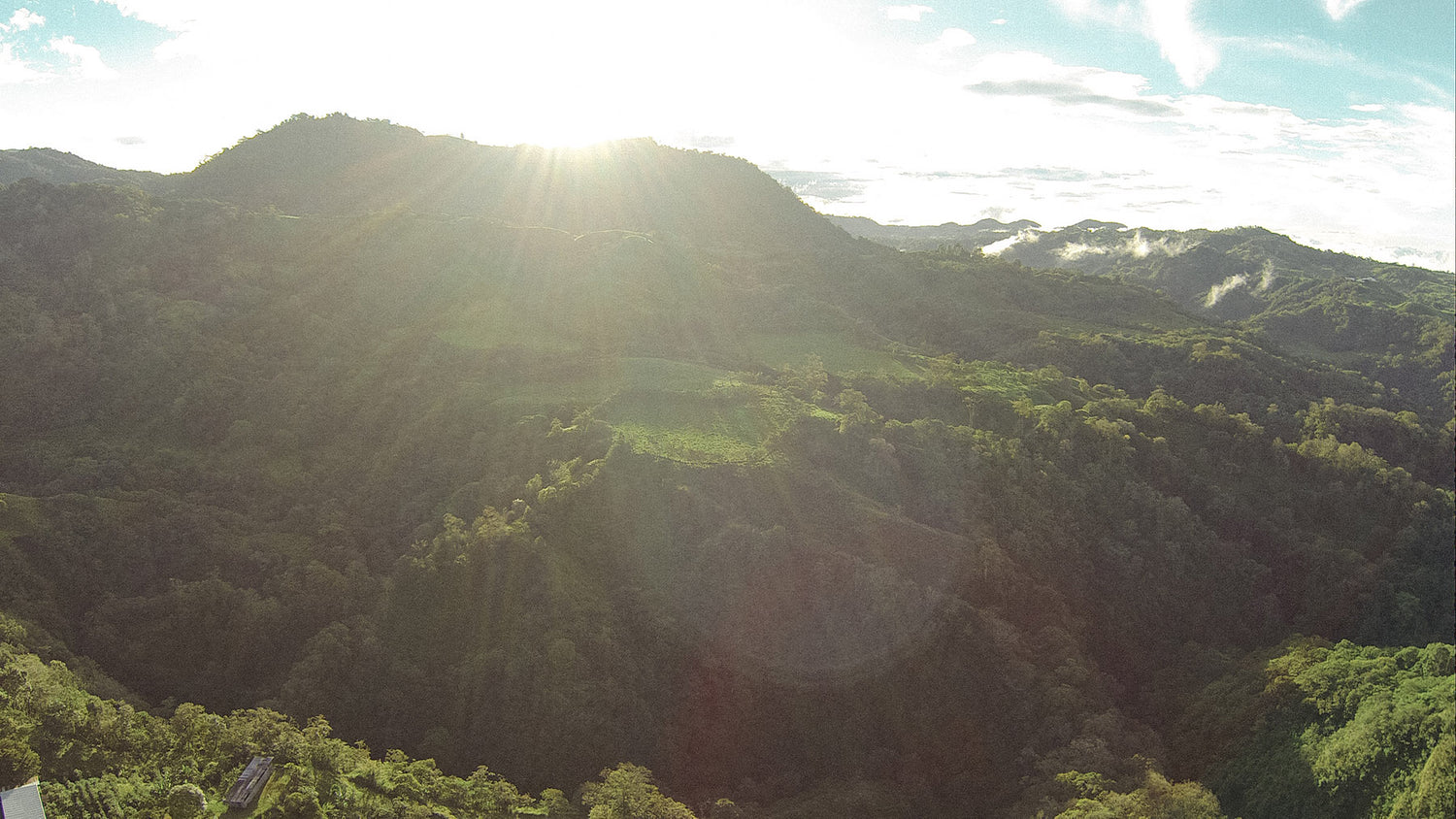It is the last resort before you can enjoy your espresso: the espresso cup . It is not just a vessel into which you pour the brown gold. It is something like a wine glass - for coffee, of course: aroma enhancer, flavor refiner, temperature regulator. The espresso cup has many functions and also a considerable influence on the taste of the espresso ... and your espresso cups should be beautiful too. Yes, you could write a whole text about that, because with wine, for example, nobody disputes that different glasses influence the taste of the wine differently. And with 400 aromas, wine has only half as many as coffee, which has around 800 aromas . This means that in addition to preparation and bean quality, the espresso cups also play a major role in being able to enjoy all the aromas of the coffee. There is no blanket answer as to what the perfect cup is. But here you can find out which properties of the espresso cup influence the taste of your espresso and how.
Characteristics of espresso cups
Size
Espresso is a small coffee specialty. Depending on the case , 25 to 30 ml of liquid ends up in the espresso cup. Sometimes, however, it is 50 to 60 milliliters – when you need or want an espresso doppio. That’s why most espresso cups have a capacity of 60 to a maximum of 90 ml . This means there is enough space for a single or double espresso, as well as for the crema that goes with it. The small espresso cups also have another purpose: the espresso does not cool down as quickly as it would in a large coffee cup, for example. And the practical idea behind it is that the small espresso cup and a pair of scales still fit under the spout of the portafilter machine. A coffee cup or even a latte macchiato glass would no longer fit. Plus, your espresso would look lost in an oversized cup.
shape
From this point on it becomes very important because the shape is almost more important than the material . Wide espresso cups, for example, offer plenty of space to smell and can therefore capture many coffee aromas. They are primarily suitable for fruity coffees. Unfortunately, the crema breaks more quickly in wide cups. Narrow espresso cups, on the other hand, are excellent for a good, firm crema but offer fewer aromas on the nose. They are primarily suitable for chocolatey espressos. The tulip-shaped espresso cup is a hybrid of wide and narrow and is therefore suitable for all espressos. Square cups are more of a design thing and offer no particular advantages for the taste experience. We should also mention the shape of the base of the cup here. It has to be thick to maintain the temperature and depending on how it is shaped, the espresso mixes perfectly when poured. Otherwise, don't forget to stir before drinking.

Color
Let's put it this way: the color is a matter of taste and can basically be chosen freely. At least as far as the outside of the espresso cup is concerned. On the inside - and you should really pay attention to this - the cup should always be white. Because only then do you get the full visual experience: the contrast between the white of the espresso cup and the brown of the coffee makes the drink much more attractive and the hazelnut-brown crema stands out with its dark and lighter reflections, which means you are more involved in the experience. You should never choose a cup with a darker interior , otherwise the beautiful coffee color and the visual experience will be lost in your dark espresso cup. And the taste suffers a little too: if you can't recognize the coffee well, you tend to taste it a little less. The surface of the espresso cup also plays a role. Rough surfaces lead to a, let's say, rough or furry mouthfeel. So it's best to choose very smooth espresso cups.
Wall thickness
In our world, everything always strives for balance. And that includes temperature. If you pour something warm into something cold, the warm gets colder and the cold gets warmer. That's why we always warm up espresso cups before we pour the espresso in. This effect or condition also exists between a hot cup - and the espresso in it - and the air around the cup. That's why a good espresso cup should maintain the temperature of an espresso for a long time. That's why thick-walled espresso cups or double-walled ones are best . An espresso contains so little liquid that rapid cooling is not desired. As mentioned, however, it is important to preheat the cups. Otherwise the espresso will give off too much heat to the cold espresso cups too quickly, which changes the taste and makes the espresso fruitier. Another option would be double-walled espresso cups made of glass. Here, air creates an insulating layer. And because air is a poor conductor of heat, the espresso in the double-walled espresso cups also stays hot.
With or without handle
Whether you buy espresso cups with or without handles doesn't really matter for coffee enjoyment . What's important is that you can easily grip the handle with your index finger and thumb without getting a cramp or touching the cup with your middle finger, as this could get quite hot. In addition, the handle should neither be over- nor undersized; it should fit the espresso cup very well. And if you buy a version without a handle, the cup shouldn't get too hot where you touch it.
Different materials and their taste influence
Ceramics/Porcelain
First, the difference: while ceramic is mainly made of coarse clay, the main component of porcelain is kaolin. Porcelain is also fired at higher temperatures. Overall , ceramic cups are usually thick, while porcelain cups can also be very thin-walled . The thickness also determines the taste, because the cups conduct heat differently. Thin porcelain does not insulate as well and the espresso becomes more acidic when it cools down. Ceramic, because it is usually thicker, retains heat well and therefore contains less acidic espressos.
Glass
Espresso cups made of glass are beautiful because you get the full visual experience. You can see the espresso and the crema in all its variety of colors. In terms of taste , espressos in glass cups are more complex and the acids come out better .
metal
They exist and are used. Metal cups - often enamel cups. They are practical when camping or on the go, but not so good for the taste of espresso. Metal cups are bad because they quickly remove a lot of heat from the espresso, and they also give the espresso a metallic taste, which is fundamentally undesirable.
Paper cups
The paper cup may appear often on the go. But it is almost the worst choice for an espresso . Because here too, an espresso cools down quickly and the material leaves a sticky taste in the mouth instead of enhancing the taste of the espresso. Sustainability also plays a role here: disposable paper cups produce far too much unnecessary waste .

Additional information
Which preparation is the best?
There are many ways to make the perfect espresso. You can make it in a fully automatic machine, from a stovetop pot, or the traditional way: with a portafilter . Don't forget that, in addition to the cup, the method of preparation also influences the taste of your espresso. But that doesn't have to be a bad thing; in fact, it offers a lot of scope for experimentation and trying things out. Only you can decide for yourself which method of preparation is best and which parameters are best. We recommend that you make the espresso with a portafilter machine. This gives you full control over the amount of coffee, water temperature, pressure, and brewing time .
With water, sugar, or what?
A small glass with water in it goes perfectly with the perfect cup of espresso. There are many legends surrounding glasses and water. In Italy – but only south of Florence – water is served to rinse the mouth before enjoying an espresso . Here you should also be careful never to drink water after the espresso, otherwise the barista will take offense because you want to rinse your mouth of the supposedly "bad" espresso. Another legend says that this is how Americano coffee came about , because after World War II there were a lot of American soldiers in Italy who found the espresso too strong. At some point baristas started serving a glass of water to lengthen the drink. As for sugar, it's a matter of taste. We recommend without to fully experience the taste of the coffee.
Price of espresso cups
Good, inexpensive cups can be found for around five euros, and resourceful people will find them cheaper. It is important that you have several espresso cups so that you can enjoy an espresso with friends. You can buy your espresso cup online, where the selection is almost unlimited, or in a local shop. The advantage here is that you can hold the cups in your hand once. The most important thing is to preheat the espresso cup. A cold cup cools the espresso more quickly, which causes more acids to form.
Conclusion
Apart from that, one factor is particularly important: the espresso must be hot . It comes out of the machine at just under 95 degrees, so the espresso cups should also be preheated, because if the coffee cools down too quickly during extraction, it quickly becomes bitter. The optimal drinking temperature is then on average between 60 and 65 degrees . If you drink your espresso too hot, fewer aromas will come through; if it cools down too much, it simply tastes bland.
Whether from a ceramic, glass or metal espresso cup, with or without water or even with or without sugar: tastes differ - the important thing is that you like your espresso and enjoy it . #staywild


